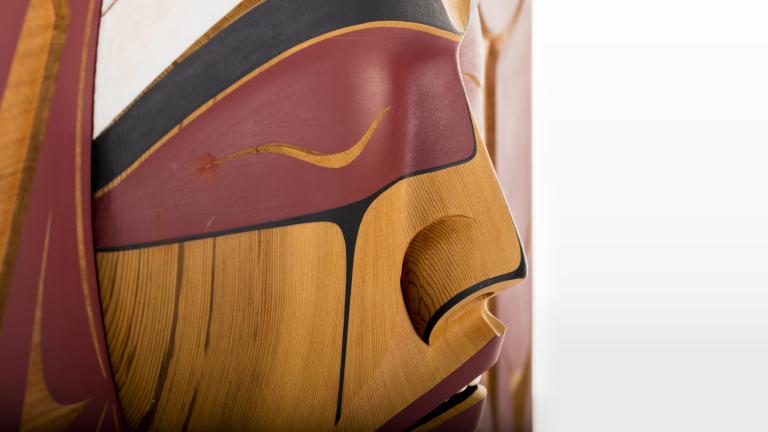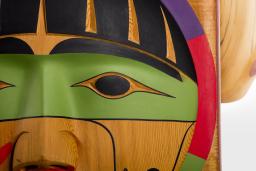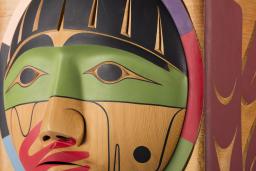In Why Reconciliation? Why Now? I talked about the idea of reconciliation as an invitation to a new and shared future and as a pathway towards a good life, both for Indigenous people and for other Canadians. In short, what I was really talking about was reconciliation as a movement of hope.
Reconciliation: A movement of hope or a movement of guilt?
By Karine Duhamel
Published:
Tags:

Photo: CMHR, Aaron Cohen
Story text
When I teach as an adjunct professor, I often have class discussions on the topic of reconciliation. When I share my great-grandmother’s story – the death of her mother at an early age, her placement in St. Joseph’s Residential School as an orphan, and the erasure of her identity as an Indigenous person – students are often uncomfortable. In hushed tones, and in clusters after class, I often hear them saying, “I don’t want to feel guilty anymore,” or “Why should I feel guilty about what our ancestors did in the past?” These sentiments capture what I think is a fundamentally misunderstood component of reconciliation. That idea is the misconception that reconciliation should be based on guilt, rather than on hope.
Most people would agree, for instance, that guilt is a poor motivator. When I feel guilty, I feel lost and frustrated. Guilt leads people to look towards the past and sometimes remain trapped in sad feelings like anguish, anger or frustration. Guilt rarely moves people forward; in fact, it often traps them in the past, stuck in a feeling that they just can’t shake.
Contrast guilt with hope. Hope sometimes gets a bad reputation, especially when it serves to forget the past. But hope that emerges in a proactive way and still understands and knows the past, this kind of hope implies action. It necessarily involves the will to get there and it forces us to consider how we will do so.
Hope is a forward‐thinking emotion; hope engenders solutions.
This is why I choose to view reconciliation within the framework of hope rather than within the framework of guilt. This is not to deny that there is an ugly, wicked and horrific past that society, including governments and citizens, need to address, both materially and immaterially. But colonization lives on in many ways, and the damage can only begin to be undone by thinking forward. In short, acknowledging the past within the framework of hope means we can imagine a way forward; it means, in very simple terms, that the solutions we are seeking become available, once we stop feeling trapped in the guilt of the past and begin imagining a better future for us all.
There has never been a more important time for this. As recent events in Indigenous communities have dominated the news, I’m struck by the fact that there is pain, there is misery, but despite these, there is tremendous resilience and a desire to find a common future that leads to a good life for all. There is a future to be found, but it is not found in guilt. Guilt means feeling bad – it means feeling bad in the place that you find yourself. Rather, the future can only be found if reconciliation is conceived as a process of hope.
Indigenous youth show us this – the youth of Grassy Narrows recently wrote, recorded and filmed the music video “Home to Me,” which demonstrates that, despite ongoing challenges, youth are imagining a way forward. In the same way, if we allow ourselves to imagine anything, to rethink the future, then we are thinking beyond the rose‐coloured glasses: we are thinking forward. The solution to the legacy of the past does not lie in it; it lies beyond, in a future we may not yet have imagined, but can only access, through hope.
Dive Deeper
Why reconciliation? Why now?
By Karine Duhamel
Since the publication of the Truth and Reconciliation Commission of Canada’s final report in 2015, more and more Canadians seem focused on the idea of reconciliation.

The nuts and bolts of reconciliation
By Karine Duhamel
As a child, I often visited museums. I was lucky to be able to travel with my family, and to visit interpretive spaces across the country.

Truth and reconciliation: What’s next?
By Karine Duhamel
This article series has focused on the way we present Indigenous content within the Museum and how we are approaching reconciliation.

Suggested citation
Suggested citation : Karine Duhamel. “Reconciliation: A movement of hope or a movement of guilt?.” Canadian Museum for Human Rights. Published . https://humanrights.ca/story/reconciliation-movement-hope-or-movement-guilt